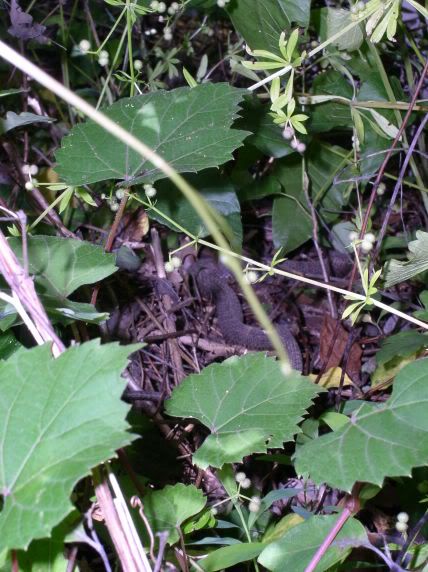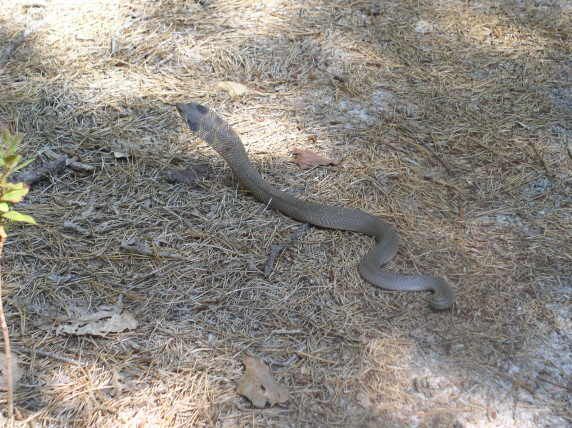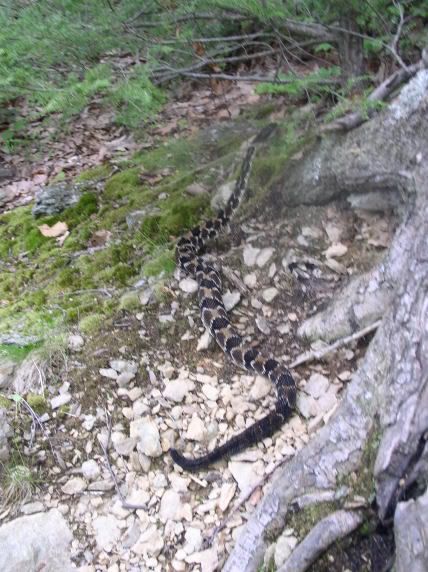NJSnakeMan said:
has anybody ever found any black phased timber rattlesnakes in the pine barrens? from everybody's rattlesnake pics i've seen, it looks like they're all yellow phased in south jersey.
Let's recognize that the terms "yellow phase" and "black phase" are two extremes of a fairly even gradation within a continuum. That continuum, however, is certainly not represented by a simple Gaussian curve; were that so, then most rattlers would be in the in-between range of collor and pattern and the "yellows" and "blacks" would be present in lesser numbers at the outer extremes of the curve. In fact, the distribution of the extremes in color and pattern (light and dark) seems to be a bi-modal curve, with the intermediates occuring in lesser numbers than those at the extremes.
Have I seen "black" examples in the pines? Yes; a few, and they are, in my experience, a distinct minority of the rattlers in the pines; and none were as dark as the typical black-phase examples I've seen in Pennsylvania and Upstate New York. The light or yellow phase rattlers predominate and bear greatest resemblance (to my eye) to the generally yellow, grey, and russet "Canebreak rattlers" with which I came to be familiar in east Texas rather than to the yellow phase rattlers elsewhere in the Northeast. I think I've held forth previously on my opinion that these "canebreak-like" piney rattlers, as well as many other examples of so-called "southern" beasts and plants are but more evidence that the NJPBs are but the northern extreme and refugium of the once continuous coastal plain pine and oak forest that covered the whole southeast as the tundra and taiga retreated north after the last Ice Age .
Note that these impressions of pine barrens rattlers are not the result of hundreds of observations; rather from only about 40 to 50 different examples in the 50's and early 60's. There were more "sightings" but they were re-sightings/captures of previously caught and marked individuals.
I understand from several posting on this list that the NJ State non-game biologists have, of late, taken an interest in the herp populations in the pines. I'd sure like to hear what their observations reveal of the status of current populations.
Dave in South Dakota (East River)









